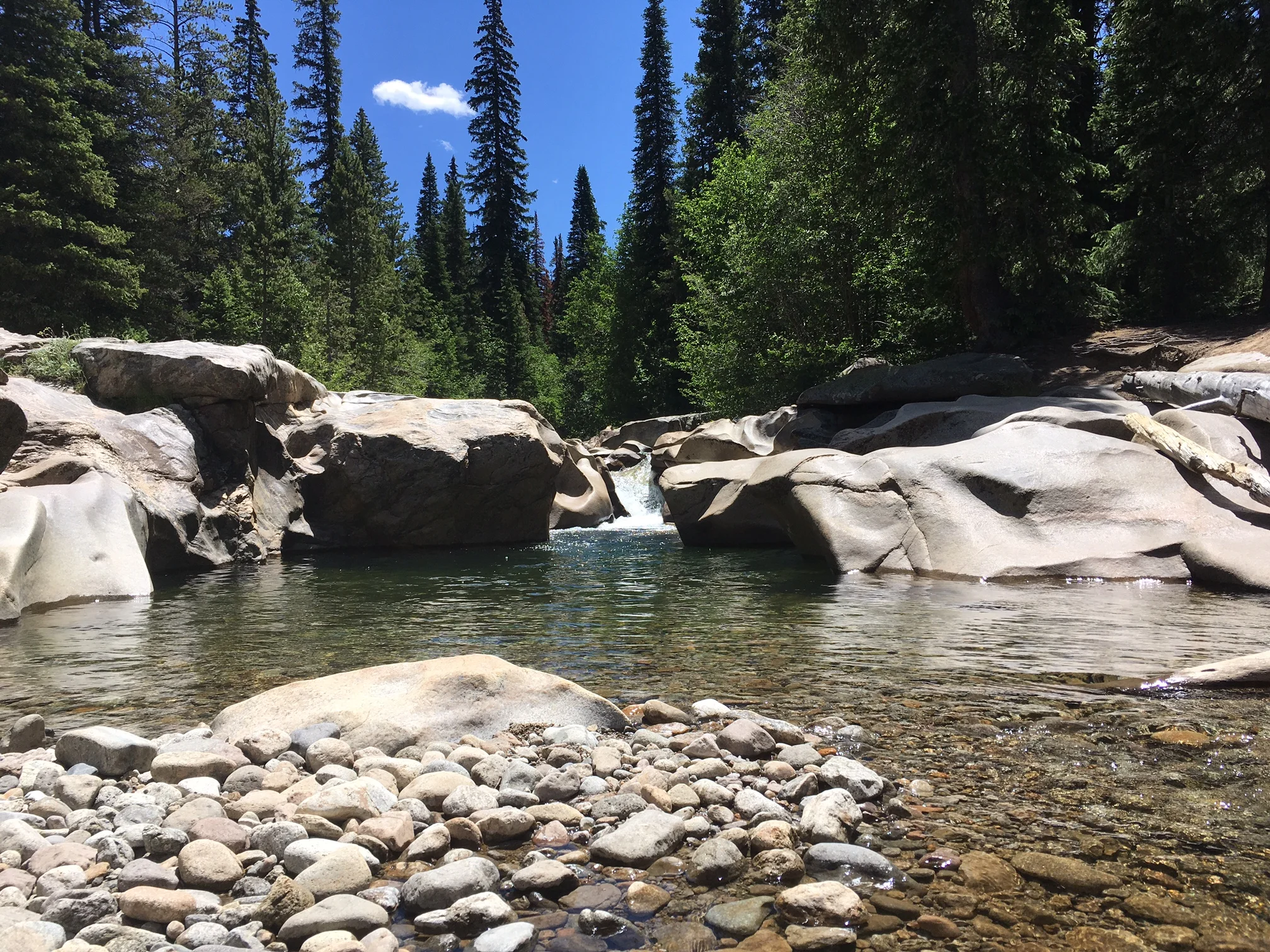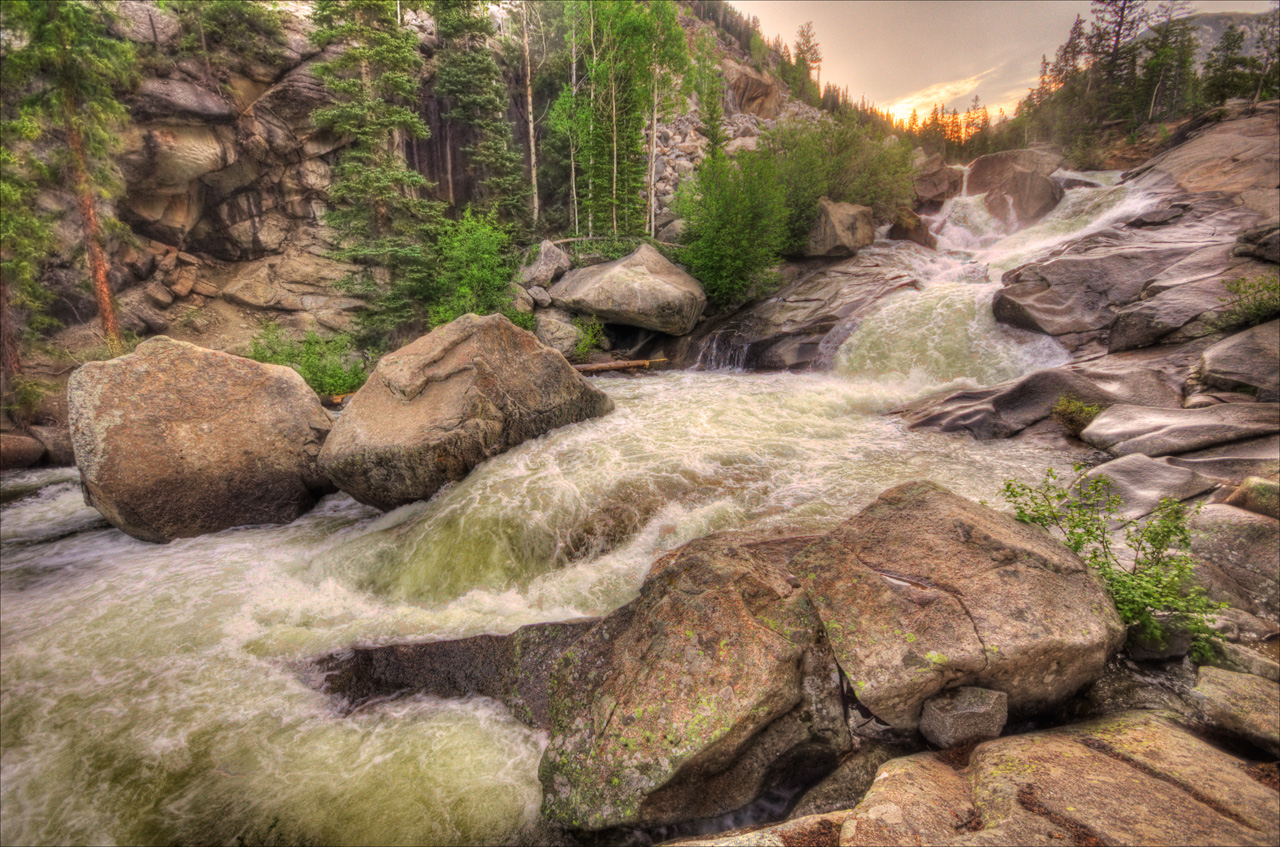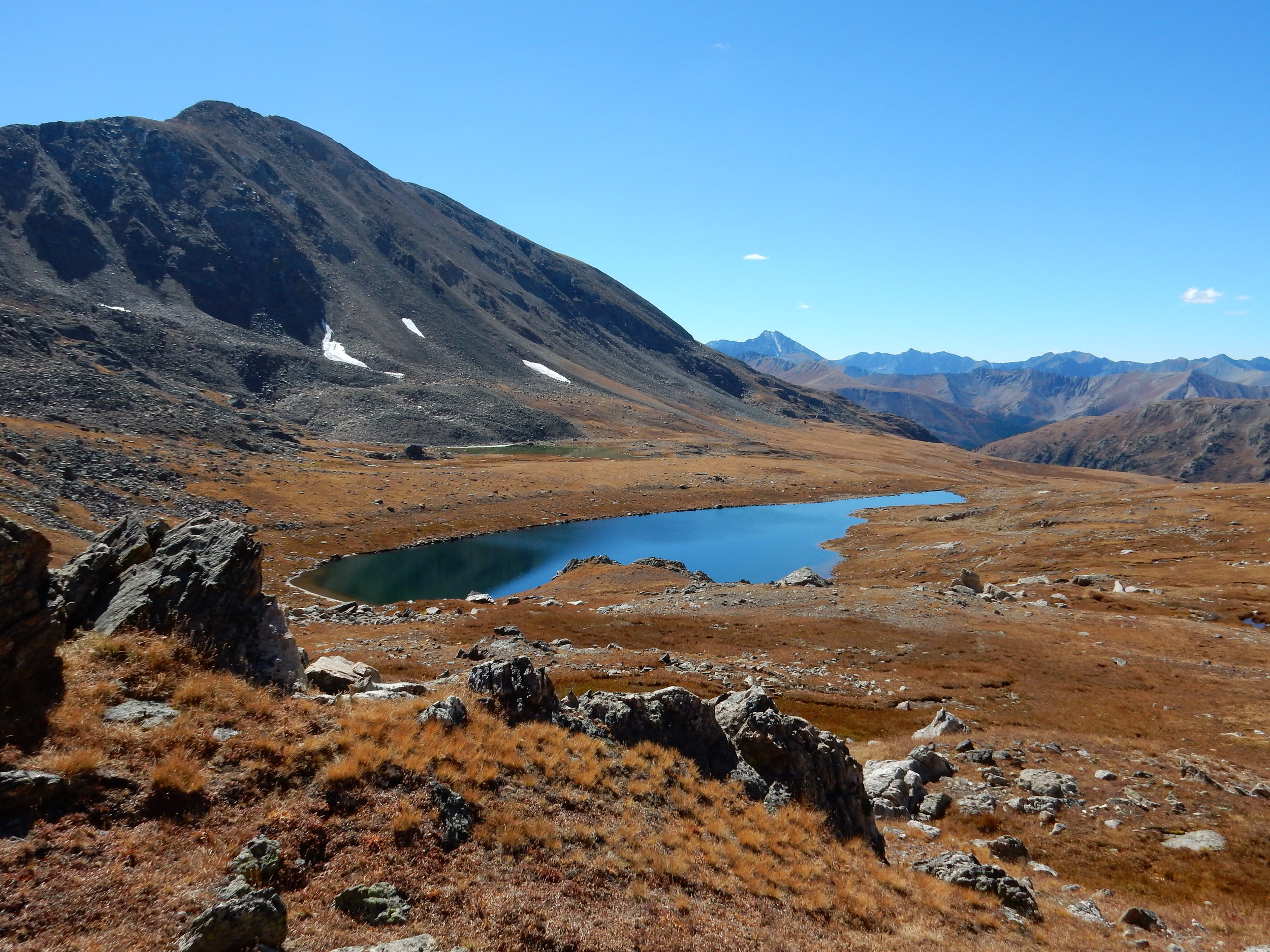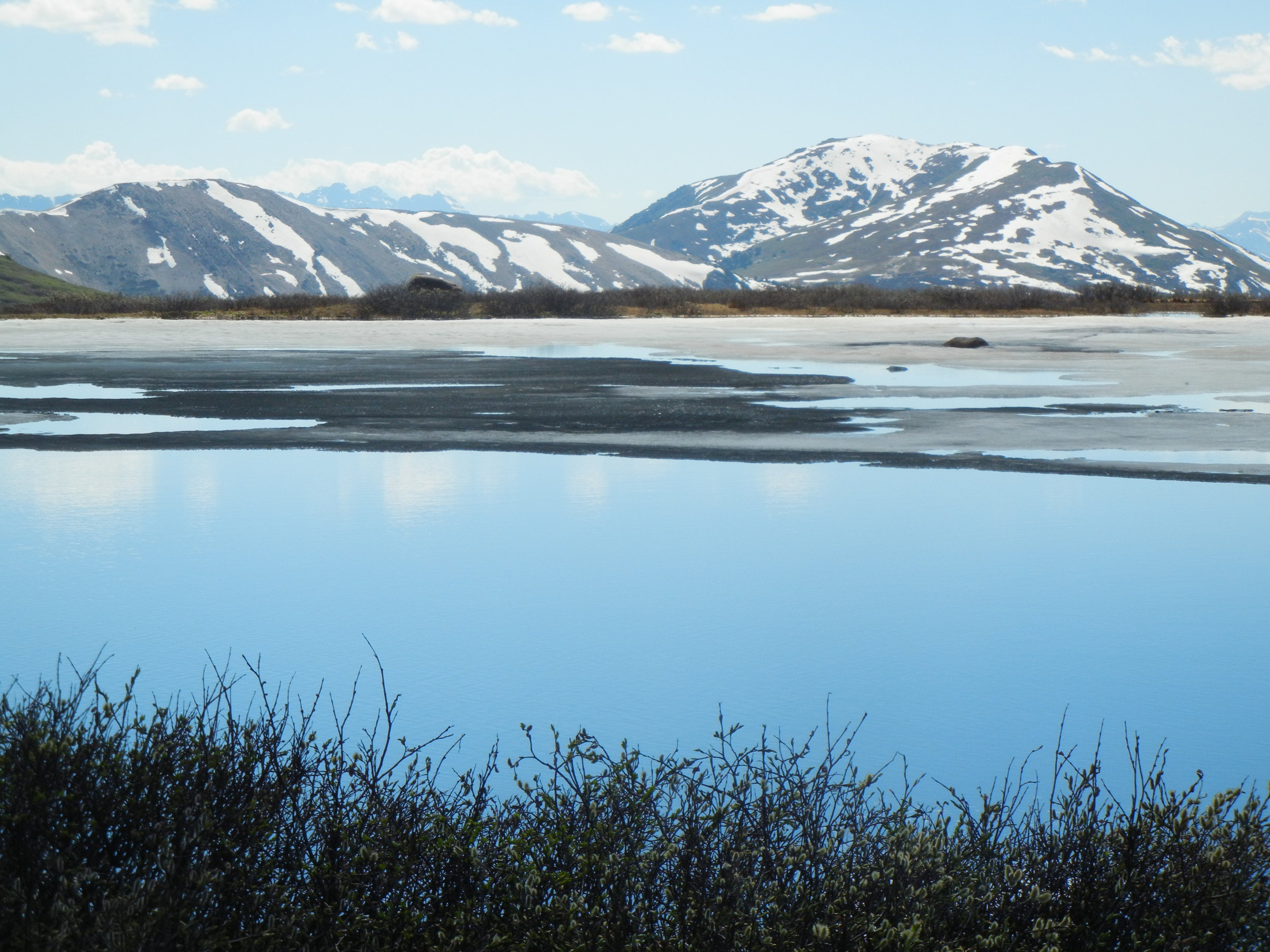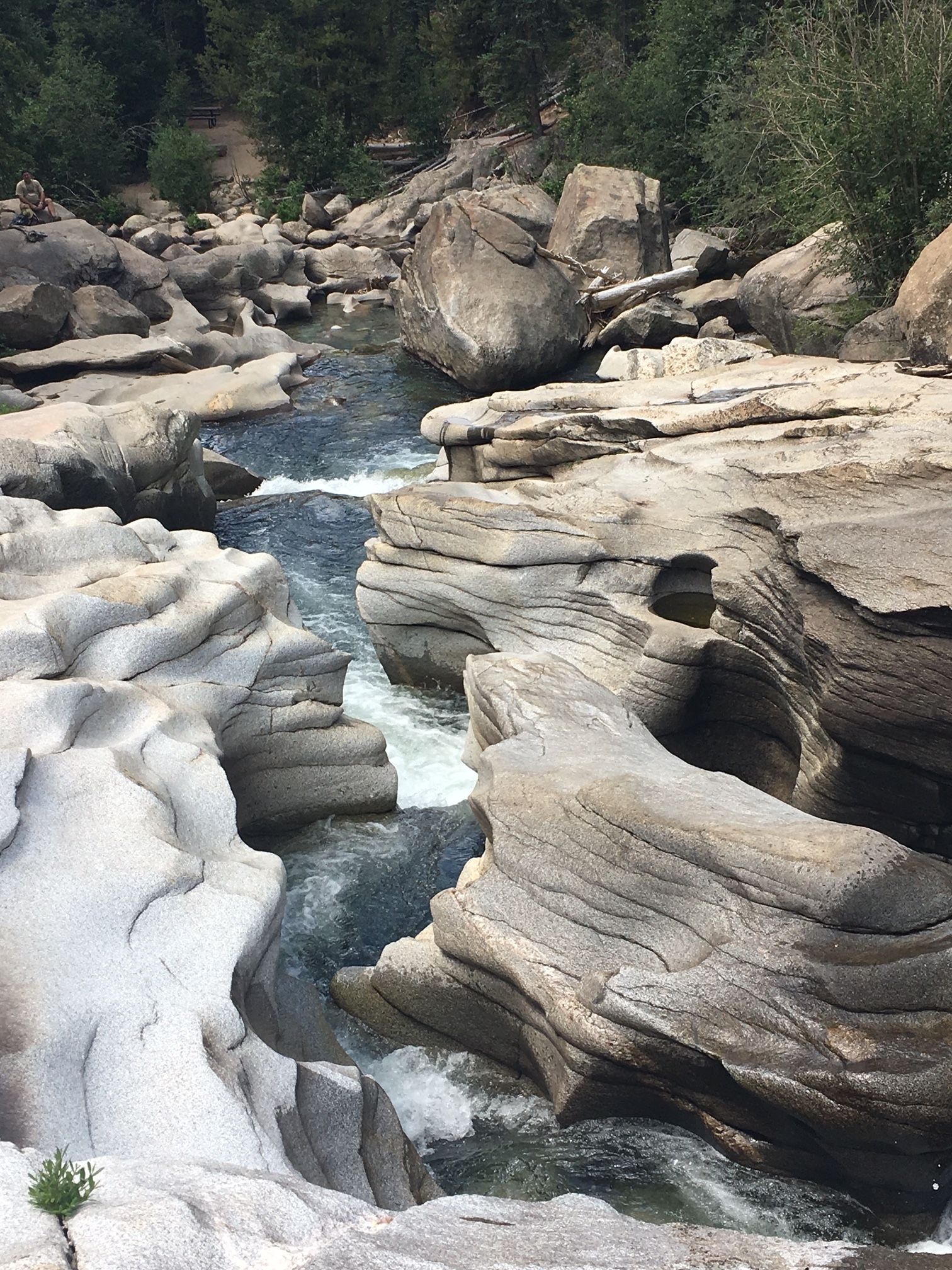Roaring Fork River
The river originates as a tiny rivulet draining Independence Lake at an elevation of 12,500 feet. During its 60-mile journey from the Pass to its confluence with the Colorado River, the Roaring Fork River is fed by its tributaries, the Fryingpan and Crystal Rivers. The Roaring Fork will grow to be 1,000 times the size of its original trickle.
Despite diversions that siphon off up to 40% of its flow, and despite passing through the fairly large municipal areas of Aspen and Basalt, the Roaring Fork River is one of the most unspoiled in Colorado. However, recent increases in contamination to Lincoln Creek, a major tributary of the Roaring Fork originating near the old mining town of Ruby, threaten its ecological integrity.
-
Cumbre del lago montes en junio
El río nace como un pequeño riachuelo que drena el lago Independence, a una altitud de 12,500 pies. Durante su recorrido de 60 millas desde el Paso hasta su confluencia con el río Colorado, el río Roaring Fork se alimenta de sus afluentes, los ríos Fryingpan y Crystal. El Roaring Fork crecerá hasta tener 1.000 veces el tamaño de su riachuelo original.
A pesar de los trasvases que desvían hasta el 40% de su caudal y de atravesar los grandes municipios de Aspen y Basalt, el río Roaring Fork es uno de los más vírgenes de Colorado.

